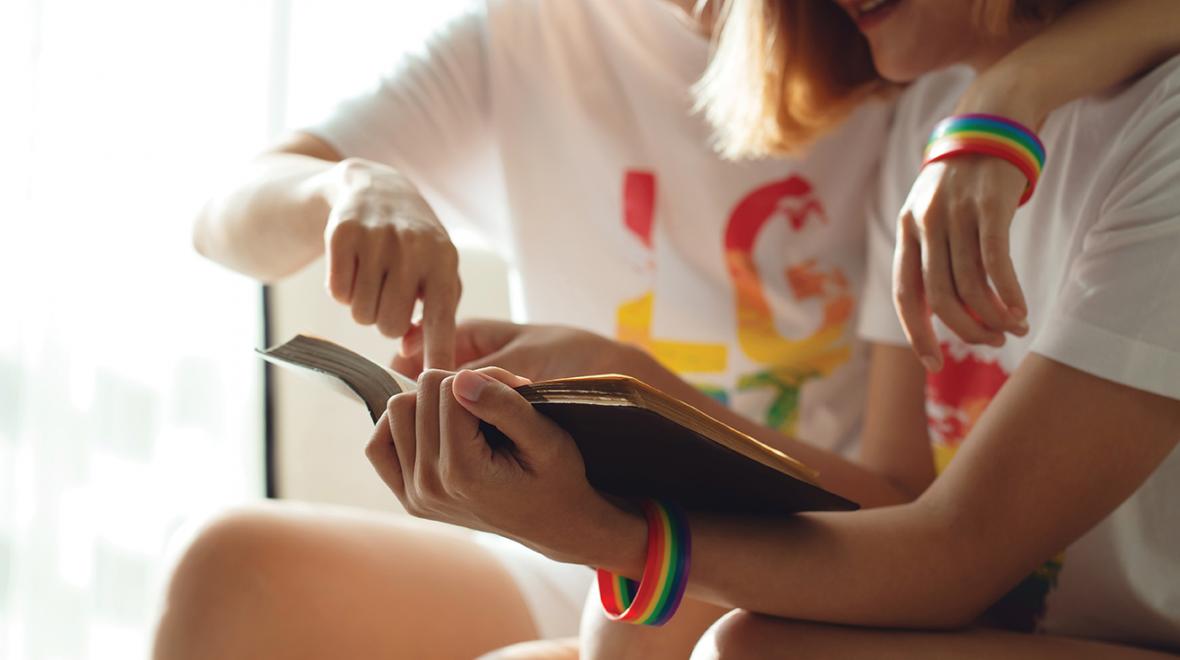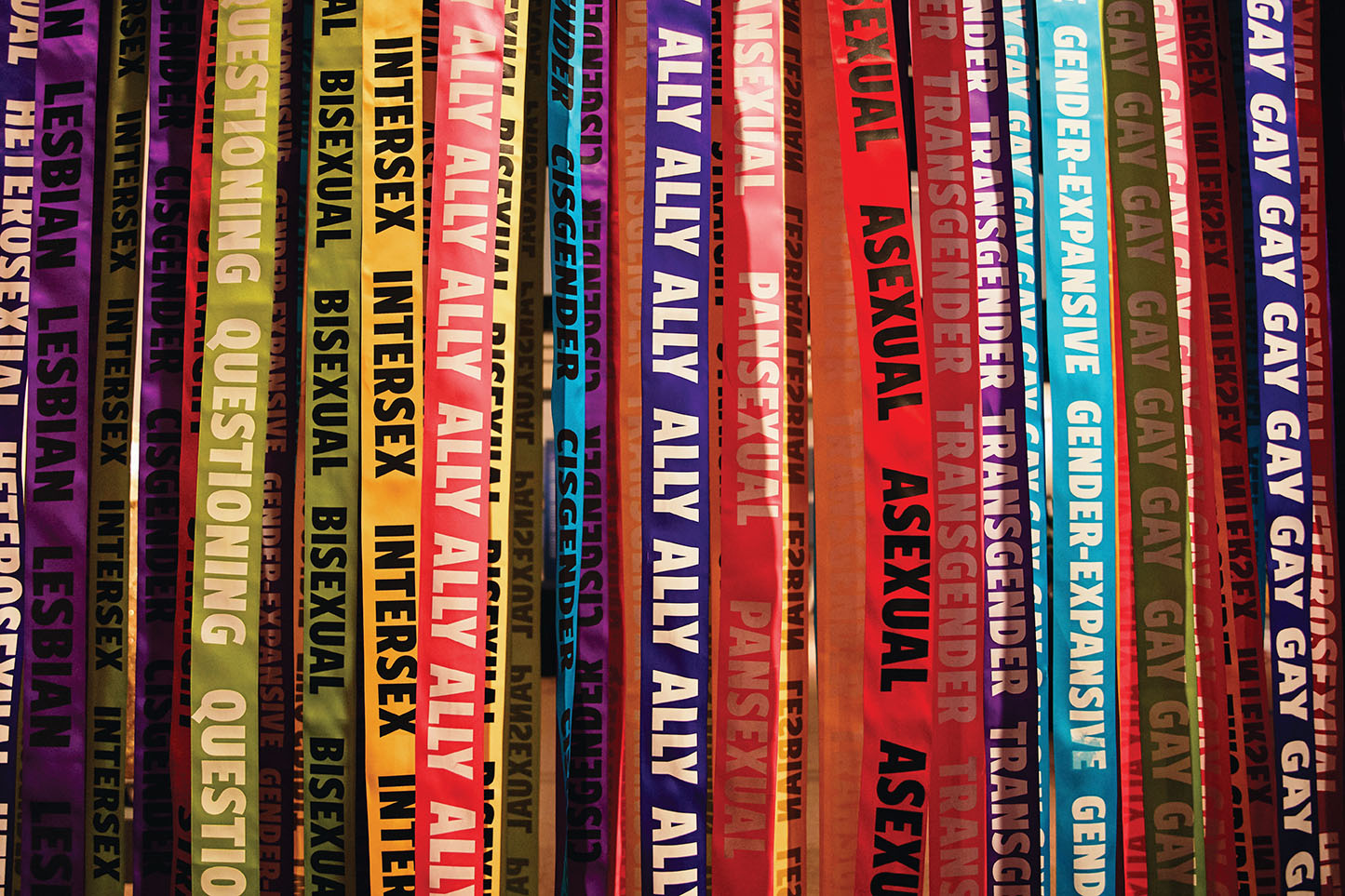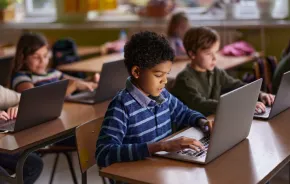
If you feel like you’re seeing more news stories lately about censorship and book bans, you’re not wrong. From the all-out assault on school libraries in Texas to the Wyoming prosecutor who considered pressing charges against librarians over sex ed books, the American Library Association reported 1,269 demands to censor library books and resources in 2022. This unparalleled number of challenges nearly doubles the number of challenges in 2021.
Social-media-fueled conservative parents’ groups are driving the rise in book challenges, but it’s not just happening in red states. In February 2022, the Walla Walla school board faced a challenge against four books. And right here in Puget Sound, a middle school librarian in Kent made news for resisting his principal’s efforts to pull the YA novel “Jack of Hearts (and Other Parts)” from the shelves.

Censorship defined
“We would define censorship as the exclusion of materials based on a specific characteristic, such as books that have to do with race or books that have to do with LGBTQ youth,” said Amanda Klecan, board chair for GLSEN Washington State, a nonprofit that works to make schools safe and affirming places for all students. The rise in attempted book bans parallels changes in publishing that have led to more books for young people addressing topics that make some adults uncomfortable.
“A book ban is when a book would be removed from a library,” said Rebecca Wynkoop, a teacher-librarian at Robert Eaglestaff Middle School in Seattle. But censorship can be more than book bans. “Censorship for a school library would mean creating barriers to access,” Wynkoop continued.
The Mukilteo School Board’s recent decision to remove “To Kill a Mockingbird” by Harper Lee from the required reading list is often cited as an example of censorship. But Wynkoop says it doesn’t qualify, because the book is still available in the school library and teachers can still choose to teach it. On the other hand, eliminating the library’s materials budget; vague definitions of “inappropriate” in school board policies; and administrators who discourage educators from using particular books constitute what many people have started to call “soft” or “silent” censorship.
“It’s the passive-aggressive approach to the broader idea of removing books from school libraries,” said Wynkoop. But all forms of censorship have one thing in common: “At the core is making choices for other people and restricting access.”
Appropriate versus relevant
Books are banned from school libraries for all sorts of reasons. The most common argument is that a book is not age-appropriate. But people who make this argument are missing the point.
The school librarian in Kent told The Seattle Times that “Jack of Hearts” is definitely not appropriate for some middle schoolers. Libraries are not supposed to be — indeed cannot be — universally appropriate for their patrons. A book that is perfect for one child will be too mature for another, while a third will have already outgrown it.
“The books in our library need to be relevant to the experiences that the students are living. Our students are still children, but that doesn’t mean they haven’t had adult experiences in their lives,” said Wynkoop. “The library is supposed to be a reflection of the students that we serve.” Those students come from a variety of racial and economic backgrounds, with widely variable home situations.
“It’s important for students to be able to see themselves in books. It helps validate their existence and their experiences, and reinforces their self-worth.
“In particular for a student who is LGBTQIA+, this whole conversation based on the fact that somebody somewhere thinks their being is inappropriate, is why we need to provide more opportunities for them. Books can be really important places for students to find the language they need to express anything that they might be dealing with,” said Wynkoop.
Klecan identifies additional benefits of queer representation in children’s books. “It’s important for students to be able to see themselves in books. It helps validate their existence and their experiences, and reinforces their self-worth. If students are not able to identify with any of the characters in the books they read, it’s hard for them to feel like their experiences are worthwhile.”
Safe spaces to benefit everyone
People who challenge library books are usually motivated by the desire to keep kids safe. But removing relevant literature does just the opposite.
“Nobody wants to do any harm. The biggest thing that we want for our students when they walk into the building is to feel that they have a place here, that the school is part of their community,” said Wynkoop. When students can’t find books that reflect their identity and experience in their school library, “We are denying those students that sense of belonging that we know is not just socially, but developmentally, appropriate and necessary for students to thrive and learn in the school environment.”
GLSEN’s most recent School Climate Survey found that librarians are at the forefront of making Washington’s schools more inclusive. Although only 25 percent of LGBTQ students saw themselves represented in the curriculum and even fewer in sex ed materials, 62 percent found inclusive materials in libraries. That makes books such as the contested “Jack of Hearts,” which wraps factual information into a fictional story, particularly important for young people.
Wynkoop has received feedback from her school’s Queer Straight Alliance club that they appreciate the library’s LGBTQ book displays and supportive swag such as pronoun pins. The alliance knows what many adults have yet to figure out: Everyone benefits from reading LGBTQ stories.
“Reading these books can provide other students a better understanding of LGBTQ people, encourage them to question stereotypes, and expose them to more inclusive and accurate accounts of history and the world around them,” Klecan explained.
“That’s incredibly important when we’re trying to build a community of learners from diverse backgrounds,” Wynkoop added.
Guided reading
“Not everybody is going to be ready for everything they might find in the library,” said Wynkoop. She encourages kids to pick up the books they enjoy and put down the ones they don’t. “Research shows that kids are motivated to read by choice. If given the agency and the encouragement to explore and to put something down if it’s not their jam, they become stronger, more confident readers,” she said.
Content warnings are a useful tool to help readers make the best book choices for themselves.
“I tell my students, ‘You are the only one who can choose what’s right for you,’” said Wynkoop. As a recent Washington Post editorial points out, “You can reread a passage you don’t understand and close a book that upsets you.”
School librarians try to build relationships with students so that they feel comfortable talking about their feelings and reactions when a book upsets them. Those conversations can be both comforting and educational for the student. Wynkoop recalls one student who came in after trying to read “Speak,” Laurie Halse Anderson’s much-challenged book that deals with sexual assault. Two years after that tearful conversation, the student recalled “Speak” as the most important book they read in middle school.
Supporting your library
School librarians are educated professionals who carefully consider the books they choose. But when anyone in the community gets upset about a book, librarians almost always become the direct target of that anger.
“Soft censorship happens when librarians don’t have support structures,” said Wynkoop. It’s not hard to be part of your librarian’s protective support structure. Even if you can’t volunteer, you can drop by and say hello. Knowing your school librarian and how they build your school’s library collection makes it easier to trust their decisions. Let your librarian know that you support their efforts to make the library an inclusive space. And if you really can’t abide a particular book on the shelves, Wynkoop advised, “Being able to have a conversation with somebody you already know makes a tough moment more productive.”
When a book’s gotta go
Not every book deserves a space on the shelves. Librarians regularly weed their collections of inaccurate science books and stories that perpetuate stereotypes. And parents have a right to challenge books they believe to be harmful.
“There are plenty of materials that we are still using that we’ve been using for far too long. There has to be a process in place for reevaluating those materials,” said Wynkoop. A good system should be transparent; rely on a team so that the decision doesn’t depend on one person’s sensibilities; and should examine the whole book rather than highlighted passages.
“There can be a moment in any book where something makes us uncomfortable or that contradicts our own personal value system. But one moment — one page in a book — doesn’t define the relevance and importance of that material for the students,” said Wynkoop. The most important question is whether the book’s merits outweigh its flaws.
“It’s about giving students the opportunity and agency to choose,” she said. Because even if it’s not the right book for your child, it might be a lifesaver for someone else’s.
Reading recommendationsFollowing are resources for parents and kids who want to expand their own LGBTQ reading: GLSEN Rainbow Library provides links to free eBooks you can download from your public library. Project LIT is a student-led grassroots movement to end book deserts and develop a new, inclusive literary canon. You can sign up to lead a book club online, follow the group on Twitter @ProjectLITComm and see their most recent book selections. We Need Diverse Books is more than just a hashtag. This nonprofit advocates for greater diversity in children’s literature and provides educational resources and tips for finding diverse books. The American Psychological Association’s Rainbow Collection publishes books for kids and teens that uplift LGBTQ voices and promote inclusive school and family values. The 2022 Lammy Awards and Stonewall Book Awards winners include books for both kids and parents. |











